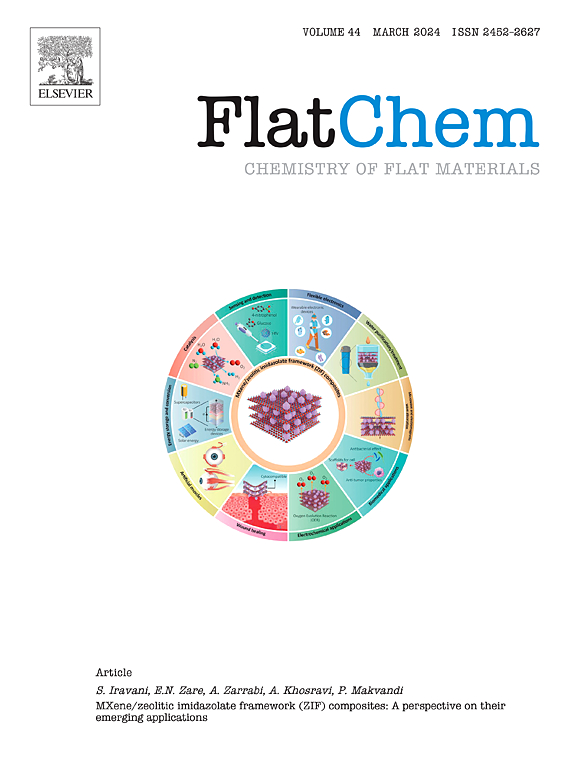Design of biphenylene-derived tunable dirac materials
IF 5.9
3区 材料科学
Q2 CHEMISTRY, PHYSICAL
引用次数: 0
Abstract
The exploration of carbon allotropes has unveiled a series of two-dimensional (2D) materials with unique electronic and mechanical properties, yet the need for stable structures with tailored electronic properties persists. In this study, we introduce a new class of 2D carbon allotropes derived from the biphenylene network (BPN), incorporating acetylenic linkages to tune their structural and electronic characteristics. Through density functional theory calculations, we identified ten novel BPN-derived structures that exhibit both energetic and dynamic stability, confirmed by cohesive energy and phonon spectrum analyses. Among them, BPN-02 and BPN-04 are metallic, featuring critically-tilted type-III Dirac cones under % biaxial strain, while BPN-22 is a semiconductor with a band gap of 0.95 eV and exhibits highly anisotropic carrier mobility. Additionally, these structures demonstrate significant anisotropy in their elastic properties, further distinguishing them from other 2D carbon materials like graphene. Our findings suggest that these novel BPN-based structures have strong potential for next-generation electronic and optoelectronic applications, providing new avenues for the design and synthesis of advanced carbon materials.

设计源自联苯的可调谐狄拉克材料
对碳同素异形体的探索揭示了一系列具有独特电子和机械特性的二维(2D)材料,但对具有定制电子特性的稳定结构的需求依然存在。在本研究中,我们介绍了一类源自联苯网络(BPN)的新型二维碳同素异形体,它们结合了乙炔连接来调整其结构和电子特性。通过密度泛函理论计算,我们确定了十种新型 BPN 衍生结构,这些结构具有能量稳定性和动态稳定性,并通过内聚能和声子谱分析得到了证实。其中,BPN-02 和 BPN-04 是金属结构,在 5% 的双轴应变下具有临界倾斜的 III 型狄拉克锥,而 BPN-22 则是带隙为 0.95 eV 的半导体,表现出高度各向异性的载流子迁移率。此外,这些结构的弹性特性也表现出显著的各向异性,进一步将它们与石墨烯等其他二维碳材料区分开来。我们的研究结果表明,这些基于 BPN 的新型结构在下一代电子和光电应用中具有巨大潜力,为先进碳材料的设计和合成提供了新途径。
本文章由计算机程序翻译,如有差异,请以英文原文为准。
求助全文
约1分钟内获得全文
求助全文
来源期刊

FlatChem
Multiple-
CiteScore
8.40
自引率
6.50%
发文量
104
审稿时长
26 days
期刊介绍:
FlatChem - Chemistry of Flat Materials, a new voice in the community, publishes original and significant, cutting-edge research related to the chemistry of graphene and related 2D & layered materials. The overall aim of the journal is to combine the chemistry and applications of these materials, where the submission of communications, full papers, and concepts should contain chemistry in a materials context, which can be both experimental and/or theoretical. In addition to original research articles, FlatChem also offers reviews, minireviews, highlights and perspectives on the future of this research area with the scientific leaders in fields related to Flat Materials. Topics of interest include, but are not limited to, the following: -Design, synthesis, applications and investigation of graphene, graphene related materials and other 2D & layered materials (for example Silicene, Germanene, Phosphorene, MXenes, Boron nitride, Transition metal dichalcogenides) -Characterization of these materials using all forms of spectroscopy and microscopy techniques -Chemical modification or functionalization and dispersion of these materials, as well as interactions with other materials -Exploring the surface chemistry of these materials for applications in: Sensors or detectors in electrochemical/Lab on a Chip devices, Composite materials, Membranes, Environment technology, Catalysis for energy storage and conversion (for example fuel cells, supercapacitors, batteries, hydrogen storage), Biomedical technology (drug delivery, biosensing, bioimaging)
 求助内容:
求助内容: 应助结果提醒方式:
应助结果提醒方式:


